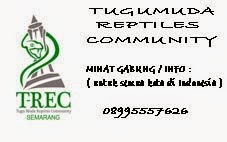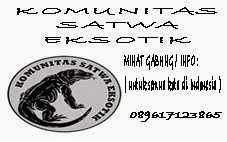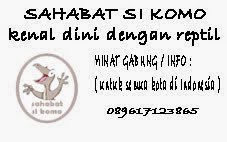T-REC
Semarang-komunitas-reptil-semarang-CITES-convention-on-international-trade-in-endangered-species-of-wild-fauna-and-flora-valid
from 12 june 2013-appendix 1-sekilas-tentang-buaya-kuba- Cuban
crocodile-Crocodylus
rhombifer
- CITES…………valid from 12June 2013
- CLASS REPTILIA ( REPTILES )
- FAMILY : Crocodylidae
( Crocodiles )
- Crocodylus rhombifer
- Appendix : 1
-
Note :
Cuban
crocodile
From
Wikipedia, the free encyclopedia
The Cuban crocodile (Crocodylus rhombifer) is
a small but aggressive species of crocodile
found only in Cuba.
Characteristics
The Cuban crocodile has numerous characteristics that sets it apart from other crocodilians, such as its brighter adult colors, rougher, more 'pebbled' scales, and long, strong legs. This is a small to mid-sized crocodilian.Distribution and habitat
Today, the Cuban crocodile can only be found in Cuba's Zapata Swamp and the Isle of Youth, and it is highly endangered. It formerly ranged elsewhere in the Caribbean. Fossils of this species have been found in the Cayman Islands and the Bahamas.The Cuban crocodile appears to favor freshwater habitat such as swamps, marshes, and rivers and rarely swims in saltwater.
Hunting and diet
Small fish, arthropods, and crustaceans make up the diet of young Cuban crocodiles. Adults of the species feed mostly upon small mammals, fish, and turtles.Conservation
The Cuban crocodile is an endangered species, listed on CITES appendix 1. Its restricted habitiat and range make it very vulnerable. Humans have hunted this species to near extinction.
Class:
|
|
Order:
|
|
Family:
|
|
Genus:
|
|
Species:
|
C.
rhombifer
|
Cuban
crocodile
From
Wikipedia, the free encyclopedia
Buaya Kuba (Crocodylus rhombifer) adalah
spesies kecil tapi agresif
, hanya
ditemukan di Kuba.
karakteristik
memiliki banyak karakteristik yang membedakannya dari buaya lain, seperti warna yang cerah , kasar, dan panjang, kaki yang kuat. adalah jenis buaya kecil dan menengah .
Distribusi dan habitat
hanya dapat ditemukan di Rawa Zapata kuba dan Isle of Youth, dan sangat terancam. sebelumnya ada di tempat lain di Karibia. Seperti Fosil spesies ini telah ditemukan di Kepulauan Cayman dan Bahama.
habitat air tawar seperti rawa-rawa, sungai dan jarang berenang di air asin.
Berburu dan diet
Ikan-ikan kecil, arthropoda, dan krustasea adalah diet/ pakan buaya muda. Pakan Dewasa terutama mamalia kecil, ikan, dan kura-kura.
konservasi
adalah spesies terancam punah, terdaftar di CITES appendix 1. habitiat terbatas dan penyebaran membuatnya sangat rentan. Dan diburu Manusia hingga spesies ini mendekati kepunahan.
Class:
|
|
Order:
|
|
Family:
|
|
Genus:
|
|
Species:
|
C.
rhombifer
|
sumber
















